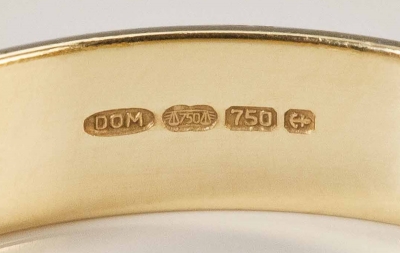
It has now become mandatory for all jewellers to hallmark gold jewellery. The Ministry of Consumer Affairs, Food and Public Distribution issued a notification on January 14 stating that it will give one year’s time to jewellers and retailers to register themselves with the Bureau of Indian Standards (BIS) and clear their old stock.
Hallmarks are often confused with “trademarks” or “maker’s marks”. A hallmark is not the mark of a manufacturer to distinguish his products from other manufacturers’ products: that is the function of trademarks or makers’ marks. To be a true hallmark, it must be the guarantee of an independent body or authority that the contents are as marked. Thus, a stamp of “925” by itself is not, strictly speaking, a hallmark, but is rather an unattested fineness mark.
In some nations, such as the UK, the hallmark is made up of several elements, including: a mark denoting the type of metal, the maker/sponsor’s mark and the year of the marking. In England, the year of marking commences on 19 May, the feast day of Saint Dunstan, patron saint of gold- and silversmiths. In other nations, such as Poland, the hallmark is a single mark indicating metal and fineness, augmented by a responsibility mark (known as a sponsor’s mark in the UK). Within a group of nations that are signatories to an international convention known as the Vienna Convention on the Control of the Fineness and the Hallmarking of Precious Metal Objects, additional, optional yet official, marks may also be struck by the assay office. These can ease import obligations among and between the signatory states. Signatory countries each have a single representative hallmark, which would be struck next to the Convention mark that represents the metal and fineness.
Picture Credit : Google
